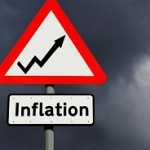By Jim Cline
 A just released paper from the Federal Reserve Bank points to a possible upward drift in the inflation rate.
A just released paper from the Federal Reserve Bank points to a possible upward drift in the inflation rate.
As we last reported, the Seattle bimonthly numbers had reached 2.6% and the national numbers were reported at 2.0%. We are anticipating the release of the “June” CPI data on July 22. With energy prices on an apparent rise, we would anticipate that the June numbers will report in at least near these April numbers.
But what about the longer term inflation outlook? Last December we discussed the issue of the Fed missing its announced 2% inflation target. At that time we explained that the modest state of the economic recovery and other factors had led to a subdued rate of inflation. We also raised the possibility that internal Fed politics might cause a repositioning of the inflation target to closer to 3% from the 2% target that has existed for several years.
These things matter in contract negotiations. If you are weighing an employer multi-year wage proposal for 2 or 2.5%, you would want to know whether inflation is likely to stay near 2% or rise to 3% or higher.
At least two Fed economists in the cited paper predict that inflation will be higher, but only at the end of 2015. In other words, they predict inflation to continue to be near 2% for the next year and a half, but raising late in 2015 due to a growing economy:
The reason for the higher inflation projection is that, in terms of the short-term unemployment rate, there is currently little economic slack. In fact, the short-term unemployment rate projects excess demand over the next two years, which implies strong upward pressure on prices.
This is just one projection of a pair or economists, but official Fed research papers often reflect a broader consensus of economists. If this projection holds out, 2015 wage proposal for 2 to 2.5% might stay in line with inflation but being locked into such a percentage into 2016 and beyond might not be desirable.



